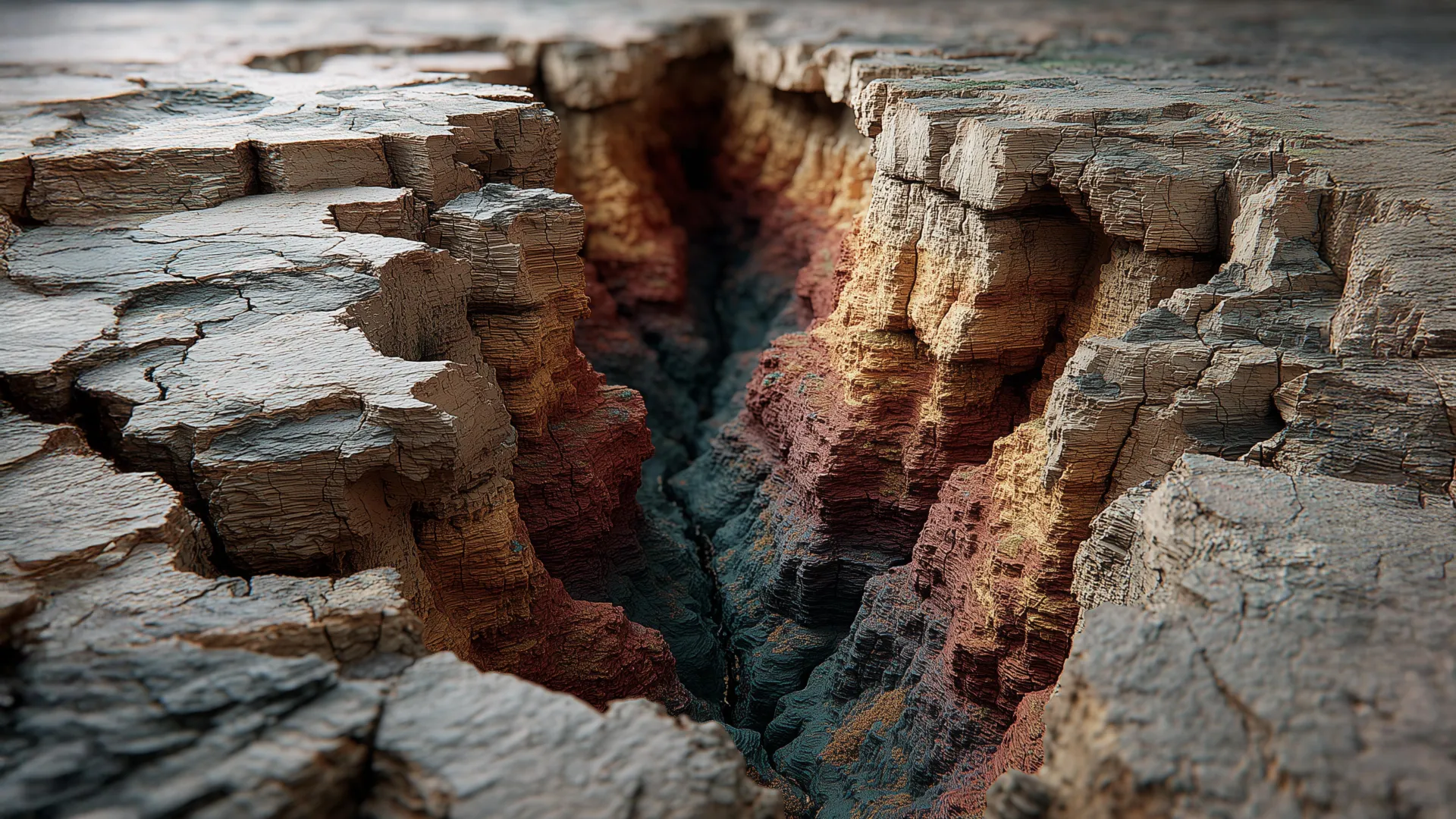Rapid fault healing could rewrite earthquake physics
- Date:
- November 22, 2025
- Source:
- University of California - Davis
- Summary:
- Scientists discovered that deep earthquake faults can heal far faster than expected, sometimes within hours. Slow slip events in Cascadia reveal repeated fault movements that only make sense if the fault quickly regains strength. Lab experiments show that mineral grains can weld together under intense heat and pressure, acting like a natural glue. This rapid cohesion may be a missing factor in earthquake modeling.
- Share:

Earthquake faults located deep within the planet can reconnect after a seismic disturbance, according to new research from the University of California, Davis. The study, published Nov. 19 in Science Advances and supported by National Science Foundation grants, introduces a new factor that could reshape how scientists interpret fault behavior linked to major earthquakes.
"We discovered that deep faults can heal themselves within hours," said Amanda Thomas, professor of earth and planetary sciences at UC Davis and corresponding author on the paper. "This prompts us to reevaluate fault rheological behavior, and if we have been neglecting something very important."
Slow Slip Events and Shifting Stress
Thomas, UC Davis colleague Professor James Watkins and their team investigated slow slip events, or SSEs, which resemble extremely slow earthquakes.
Regular earthquakes happen when stresses that accumulate as tectonic plates grind together over centuries or millennia are suddenly released, creating intense shaking that lasts only seconds.
Around 2002, Thomas said, researchers identified a different kind of seismic activity. In a slow slip event, stresses that build for months to years are relieved in movements of only a few centimeters that occur gradually over days, weeks or months.
Repeating Slip in the Cascadia Subduction Zone
To better understand these deep events, the team examined seismic data from the Cascadia Subduction Zone in the Pacific Northwest, where the Juan de Fuca plate is sliding beneath the North American plate. Slow slip events here do not behave like typical earthquakes. The same fault segment can slip again within hours or days, which indicates the fault has partially regained strength and that stress has returned very quickly.
Thomas noted that even small tidal forces reveal how rapidly stress can rebuild. The gravitational pull of the Sun and Moon affects the Earth's crust just as it influences ocean tides. In addition, the shifting weight of seawater also applies pressure to the rocks below.
The remaining question is how the fault manages to recover so quickly.
High-Pressure Experiments Reveal Rapid Healing
Watkins, a geochemist who specializes in the behavior of minerals at high temperature and pressure, used laboratory equipment capable of simulating the conditions found deep in the crust or beneath a volcano.
To recreate the aftermath of a slow slip event, Watkins and Thomas packed powdered quartz into a silver cylinder, sealed it, and placed it under 1 Gigapascal of pressure (10,000 times atmospheric pressure) at 500 degrees Celsius.
"We're simulating what happens in the aftermath of a slow slip event," Watkins said. "We cook it and look at it."
The researchers measured the speed of soundwaves traveling through the treated quartz, then opened the cylinders and examined the samples using electron microscopy.
They found that the mineral grains had welded back together during compression.
"It's like quick set fault glue," Thomas said. "It's really fast and you can get significant strength recovery."
Cohesion May Play a Larger Role Than Expected
This ability of faults to regain strength, known as cohesion, may be significant in other tectonic environments as well, including shallower systems and regions responsible for large earthquakes.
"Cohesion is neglected in most models," Thomas said. "Under certain conditions, cohesion may be more important than we thought."
Thomas and Watkins recently received a new National Science Foundation grant to expand their investigation of cohesion in earthquake faults.
"It links events on the microscopic scale to major thrust earthquakes on a scale of hundreds of kilometers," Watkins said.
Additional contributors to the study include Nicholas Beeler, U.S. Geological Survey; Melodie French, Rice University; Whitney Behr, ETH Zürich, Switzerland and Mark Reed, University of Oregon.
Story Source:
Materials provided by University of California - Davis. Note: Content may be edited for style and length.
Journal Reference:
- Amanda M. Thomas, James M. Watkins, Nicholas Beeler, Melodie E. French, Whitney M. Behr, Mark H. Reed. Rapid fault healing from cementation controls the dynamics of deep slow slip and tremor. Science Advances, 2025; 11 (47) DOI: 10.1126/sciadv.adz2832
Cite This Page: